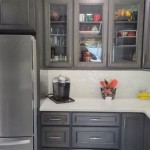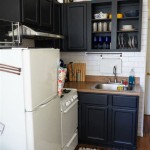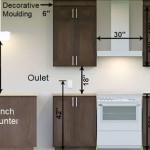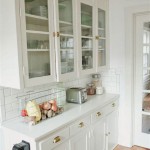Is It Difficult To Install Kitchen Cabinets? A Comprehensive Guide
Kitchen cabinet installation is a significant undertaking that can dramatically transform the look and functionality of a kitchen. While seemingly straightforward in theory, the process involves a series of detailed steps and considerations that contribute to the overall complexity. Therefore, the question of whether it's difficult to install kitchen cabinets warrants a thorough examination of the various factors involved.
The perception of difficulty surrounding kitchen cabinet installation often depends on several variables, including the installer's experience level, the complexity of the kitchen layout, the quality of the cabinets themselves, and the availability of proper tools and equipment. A seasoned carpenter with years of experience will naturally find the task less challenging than a novice attempting their first installation. Similarly, a simple kitchen with a standard layout will present fewer obstacles than a kitchen with unusual angles, uneven walls, or custom design elements.
This article aims to provide a comprehensive overview of the challenges and considerations involved in kitchen cabinet installation, allowing individuals to make informed decisions about whether to undertake the project themselves or hire a professional.
Understanding the Scope of the Project
Before delving into the specifics of the installation process, it's crucial to understand the full scope of the project. This involves more than simply unpacking the cabinets and screwing them to the wall. Accurate planning and preparation are essential for a successful outcome.
The initial step is a thorough assessment of the existing kitchen. This includes taking precise measurements of the walls, floor, and any existing appliances or fixtures. It’s imperative to identify any irregularities, such as uneven walls, out-of-plumb corners, or obstructions like pipes or electrical wiring. These irregularities need to be addressed before the cabinet installation begins.
Next, a detailed kitchen layout plan is required. This plan should clearly indicate the placement of each cabinet, appliance, and fixture. It should also account for necessary clearances, such as those required for opening doors and drawers. The layout plan serves as a roadmap for the installation process and helps to prevent costly mistakes.
Finally, the selection of appropriate cabinets is paramount. Cabinets vary widely in terms of quality, construction, and installation methods. Some cabinets are pre-assembled, while others require assembly. Understanding the specific requirements of the chosen cabinet type is critical for a smooth installation.
Key Challenges in Kitchen Cabinet Installation
Several specific challenges can arise during the kitchen cabinet installation process, increasing the difficulty and potentially leading to frustration. These challenges are often the reason why many homeowners opt to hire professional installers.
One of the most common challenges is ensuring that the cabinets are level and plumb. Uneven walls and floors are typical in older homes, and cabinets must be properly shimmed and adjusted to compensate for these imperfections. Failure to do so can result in misaligned doors and drawers, as well as an unsightly overall appearance.
Another significant challenge is accurately locating and drilling into wall studs. Cabinets must be securely anchored to wall studs to prevent them from pulling away from the wall. Stud finders can be helpful, but they are not always reliable. Knowing how to properly locate studs and using appropriate screws and anchors is essential for a secure installation.
Installing upper cabinets can be particularly challenging due to their weight and the need for precise alignment. It often requires two people to lift and hold the cabinets in place while they are being attached to the wall. Furthermore, upper cabinets must be perfectly aligned with each other and with the lower cabinets to create a visually appealing and functional kitchen.
Cutting and fitting cabinets around pipes, electrical wiring, and other obstructions can also be difficult, especially for those without experience. This often requires specialized tools and techniques to ensure a clean and professional-looking result.
Finally, installing countertops and backsplashes adds another layer of complexity to the project. These elements must be carefully measured and cut to fit perfectly around the cabinets and appliances. Improper installation of countertops or backsplashes can lead to leaks, damage, and an unprofessional appearance.
Essential Tools and Techniques
Successful kitchen cabinet installation requires a specific set of tools and a fundamental understanding of the techniques involved. Without the right tools and knowledge, the project can become significantly more difficult and the results may be less than satisfactory.
A basic toolkit should include a stud finder, level (both a standard level and a laser level), measuring tape, drill, screwdriver (both manual and power), jigsaw, circular saw, hammer, and shims. Specialized tools such as a cabinet jack or a multi-tool can also be helpful for specific tasks.
Proper measuring techniques are crucial for accurate cabinet placement and alignment. Measurements should be taken multiple times to ensure accuracy, and it's always a good idea to double-check the measurements before making any cuts.
Using shims to level and plumb the cabinets is a critical technique for achieving a professional-looking result. Shims are thin pieces of wood or plastic that are inserted between the cabinet and the wall or floor to compensate for imperfections. They should be used sparingly and carefully to avoid placing undue stress on the cabinets.
When attaching cabinets to the wall, it's important to use the correct type of screws and anchors. Screws should be long enough to penetrate the wall studs and provide a secure hold. For heavier cabinets, it may be necessary to use additional anchors, such as toggle bolts or lag screws.
Finally, knowing how to properly scribe cabinets to fit against uneven walls or ceilings is a valuable technique. Scribing involves tracing the contour of the wall or ceiling onto the cabinet and then carefully cutting away the excess material. This allows the cabinet to fit snugly against the uneven surface and create a seamless appearance.
The availability and proper use of these tools and techniques directly impacts the perceived difficulty of the cabinet installation process. Familiarity with these elements is essential for a successful DIY project.
The complexities of kitchen cabinet installation are further compounded by the various styles and manufacturers of cabinets available. Each possesses its own specific installation guidelines and potential pitfalls. Some cabinets might require specialized hardware or installation methods that deviate from standard practices. Detailed review of the manufacturer's instructions is crucial for any individual contemplating a DIY installation. Neglecting these instructions can lead to structural instability of the cabinets, warranty voiding, and potential safety hazards.
Furthermore, the timeline for a kitchen cabinet installation project is often underestimated. The dismantling and removal of existing cabinets, preparation of the kitchen space, and the actual installation process itself can take several days, or even weeks, depending on the size and complexity of the kitchen. This extended timeline can be disruptive to daily life and require careful planning to minimize inconvenience. The disruption is amplified if any unforeseen issues arise, such as the discovery of hidden plumbing or electrical problems that necessitate further repairs or modifications.
Another often overlooked aspect is the proper disposal of old cabinets and construction debris. Depending on local regulations, this may require renting a dumpster or making multiple trips to a landfill or recycling center. The removal and disposal process can be physically demanding and time-consuming, and should be factored into the overall project plan. Some cabinet retailers or installation companies offer removal services for an additional fee, which can alleviate this burden.
The decision of whether to undertake a DIY kitchen cabinet installation or hire a professional installer ultimately depends on individual factors such as skill level, available time, budget constraints, and tolerance for risk. While a DIY approach can save money on labor costs, it also carries the potential for costly mistakes and delays. Hiring a professional installer ensures a higher level of expertise and quality workmanship, but it comes at a price. A careful assessment of these considerations is essential before making a decision.
For those considering a DIY installation, it is highly recommended to thoroughly research the process, watch instructional videos, and consult with experienced individuals before starting the project. Breaking the project down into smaller, manageable steps can also help to reduce overwhelm and increase the chances of success. Starting with the installation of a single cabinet to gain experience and confidence is often a wise approach.
Ultimately, the perceived difficulty of installing kitchen cabinets is a subjective assessment that depends on a multitude of factors. While it is undeniably a challenging task, it is not insurmountable for those with the necessary skills, tools, and dedication. However, it is important to approach the project with realistic expectations and a willingness to learn and adapt as needed.

How To Install Kitchen Cabinets Diy Family Handyman

How To Install Kitchen Cabinets The Home Depot

How To Install Kitchen Cabinets Diy Family Handyman

How To Install Kitchen Cabinets And Remove Them Remodel Pt 1 Crafted Work

Kitchen Cabinet Installation Ep 120

Here S How Install New Upper Kitchen Cabinets

How To Install Base Cabinets The Home Depot

How To Install Kitchen Cabinets All By Yourself Re

Should You Install Your Own Kitchen Cabinets Deseret News

How To Install Kitchen Base Cabinets Easy Diy For Beginners
Related Posts








